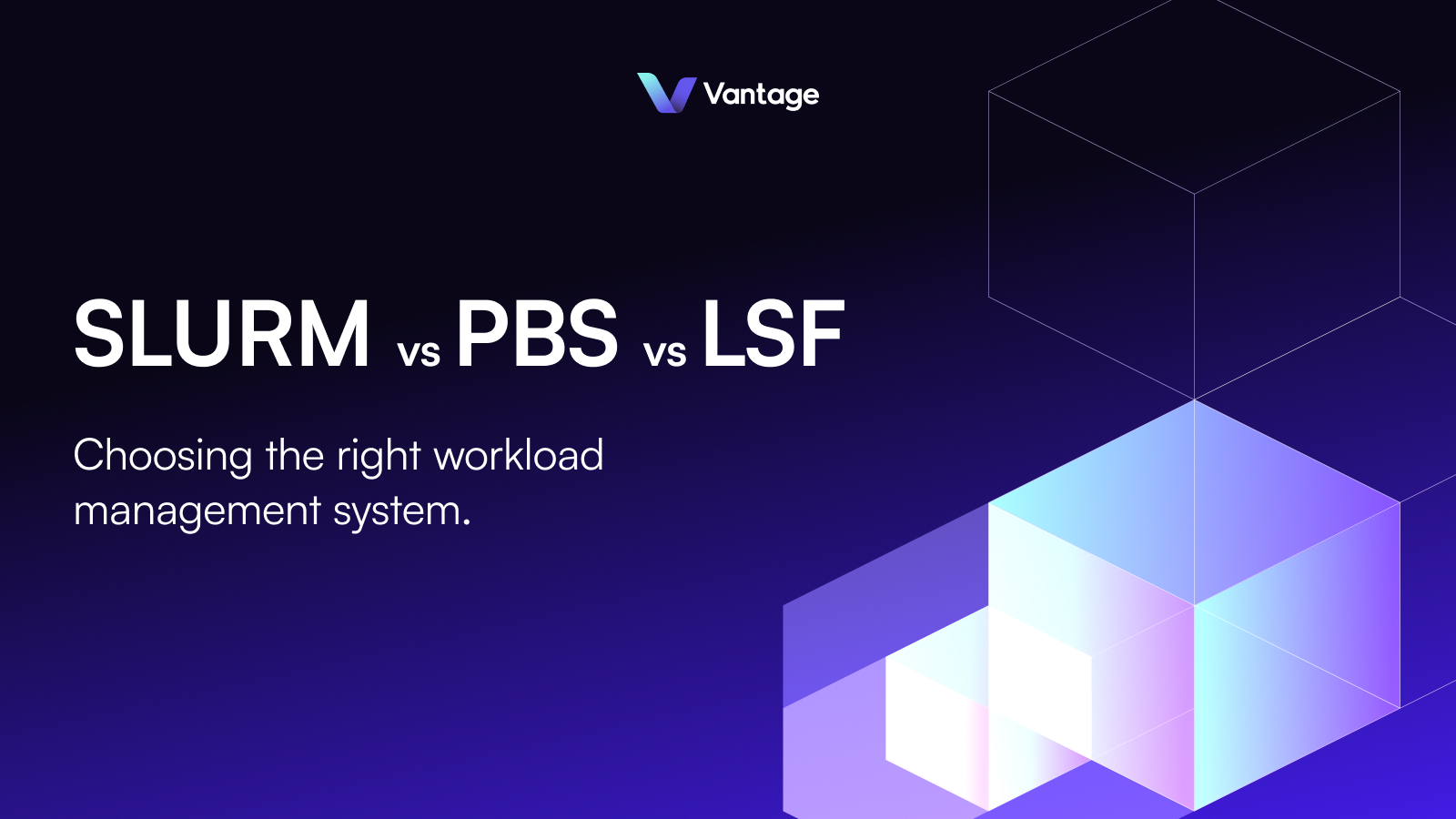GPUs are the new Microscopes

June 24, 2025

Behind Biology's Rapid Acceleration
Biology has entered the age of exascale. Genomic sequencing is moving faster than Moore’s Law. AI models are now designing proteins, predicting phenotypes, and engineering entire molecular pathways. Life science isn’t confined to the lab bench anymore it’s powered by compute. From Boston to Berlin, Singapore to São Paulo, researchers are turning to platforms like Vantage Compute to move faster, make sense of more data, and unlock discoveries that would’ve been impossible just a decade ago.

Behind it all is a shift in how we think about scientific tools.
Cloud GPUs, massive compute clusters, and even early-stage quantum systems are becoming just as essential as microscopes and pipettes.
Things that once sounded like science fiction like simulating entire organs or designing enzymes from scratch are starting to feel like everyday science.
Bottlenecks Have Shifted from the Benchtop to the Backend
For much of the 20th century, biology moved at the pace of microscopes, reagents, and long hours at the lab. Today, the bottleneck isn’t in the wet lab it’s in the backend. The amount of data being generated in genomics, proteomics, and systems biology is staggering. In some areas, it’s growing up to four times faster than our compute capacity.
.png)
Genomic data now outpaces even astronomy and particle physics in scale. Sequencing a human genome used to take 13 years and cost billions. Now it takes less than an hour. But interpreting that data figuring out which mutations matter, modeling protein behavior, predicting patient outcomes takes massive computing power and smart infrastructure. Stephens et al., 2015
What’s Fueling the Shift to AI-Powered Biotech?
AI in genomics isn’t a moonshot anymore it’s becoming the standard. Analysts predict the global market for AI in genomics will reach over $11.3 billion by 2034, growing at nearly 24% per year. Vision gain, 2024. North America is leading the way, but Asia-Pacific is catching up fast with major national sequencing programs and sovereign cloud initiatives.
Several forces are driving this growth. Sequencing costs have dropped dramatically down by over 99.999% since 2001. NHGRI Researchers are combining genomic, proteomic, and metabolic data like never before. And powerful AI models especially multimodal one scan now draw insights from this tangled web of data.
.png)
From biotech startups to global pharma companies, teams are rethinking their workflows with AI at the center. And it goes beyond drug discovery. Agricultural biotech, diagnostics, and even climate science are being transformed by compute-first approaches.
AI-Driven Pipelines Across the Lab
The most exciting breakthroughs in bioscience aren’t happening in isolation they’re emerging from AI-enhanced pipelines that span the entire research process. Models are getting smarter, data is becoming more integrated, and results are moving from in silico to in vitro in record time.
These models don’t just predict they collaborate. They help researchers ask better questions, test fewer hypotheses, and act faster. Whether it’s designing a cancer therapy or screening new crops, AI is becoming a true lab partner.
The Infrastructure Behind the Innovation
Every insight, simulation, and AI-generated molecule depends on compute. Not just more of it, but better access to it. Scientists need infrastructure that can scale on demand, integrate with their favorite tools, and flex between cloud, local, and national lab environments.
That’s where platforms like Vantage come in. We’re seeing research teams spin up containerized pipelines that shift seamlessly from a laptop to a GPU cluster, or from a university cloud to an exascale supercomputer. Tools like Nextflow and Galaxy are built right in. So are frameworks for AI model training, quantum simulation, and high-throughput data analysis.
What’s more, the future isn’t just classical. Hybrid systems are starting to pair supercomputers with quantum processors to accelerate the hardest problems like protein-ligand docking across entire pathogen families or simulating metabolic networks in full. DOE Exascale, IBM Quantum
Where It’s Happening: Global Impact in Action
All over the world, scientists are putting this tech to work. From government agencies to university labs and fast-moving startups, advanced compute is reshaping how research happens.
- NIH + AWS (USA): Hosting the 1000 Genomes Project on the cloud, making data accessible to researchers globally while enabling scalable AI training.
- BGI (China): Using GPU-accelerated workflows to cut human genome analysis from days to under two hours.
- Helmholtz Centre (Germany): Exploring quantum-enhanced protein folding to speed up structural biology.
- Singapore Genomics Institute: Integrating AI into national health systems for early cancer detection.

This momentum isn’t limited to elite labs. Thanks to tools like Vantage Compute, small teams and startup researchers can now run workloads that once required national lab access. It’s democratizing biotechand speeding up the future.
Final Thoughts: Compute Is Now a Core Scientific Instrument
The boundaries of biology are shifting. Compute isn’t just a support toolit’s the engine driving discovery. From digital twins of organs to AI-designed molecules and quantum-accelerated drug screening, the next decade of bioscience will be shaped by the ability to think, model, and act at massive scale.

Whether you're a researcher decoding a rare disease, a biotech startup running virtual screens, or a national lab architecting the future of health, one thing is clear: mastering the compute layer is the new competitive advantage.
Let’s build it together.
Request a demo to see how Vantage Compute helps bioscience teams scale smarter, move faster, and uncover what’s possible.

Subscribe
Share











